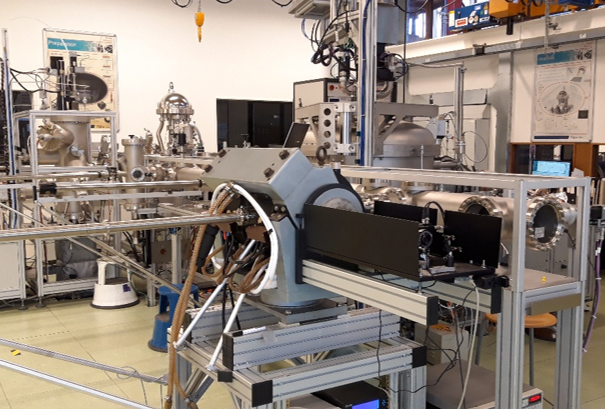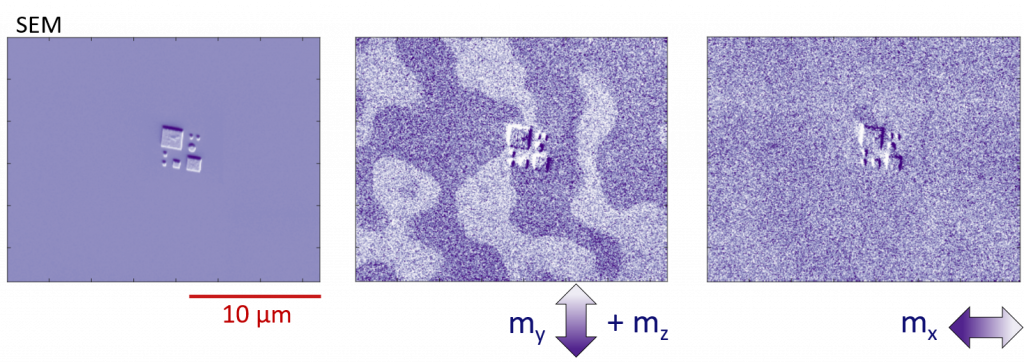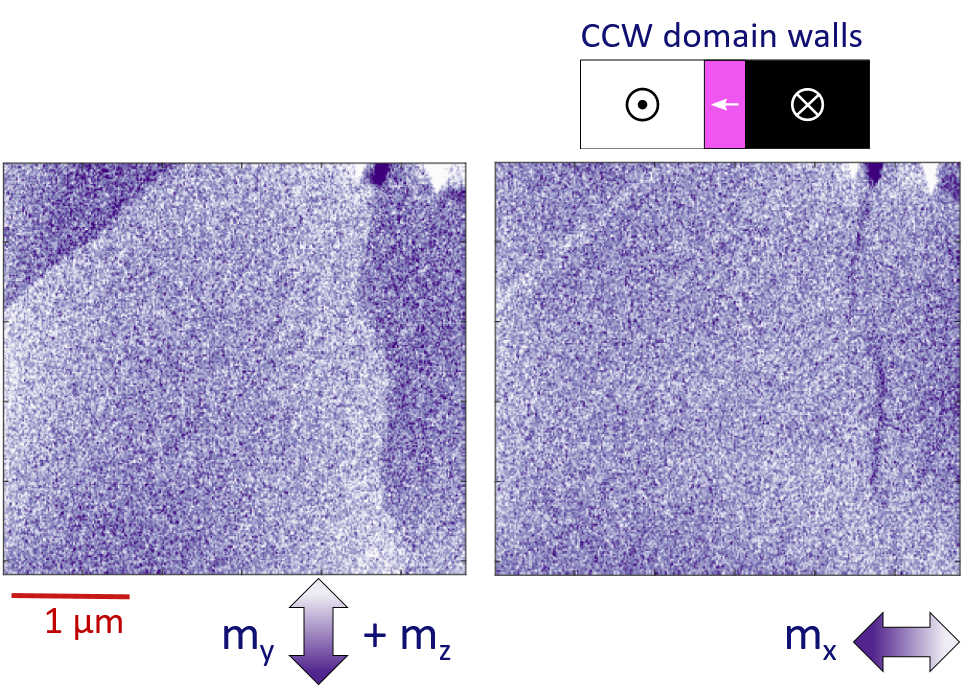Dear All, PhD students Marielle Meijer and Mark de Jong have recently been working on getting our in-situ MOKE setup running. In this way we can measure in-situ MOKE loops on ultrathin magnetic layers (2 atoms thick) without capping! Hence, we can now directly measure hysteresis loops without breaking vacuum, allowing us to probe individual interfacial effects for the first time in our lab.

In addition, this allows us to completely demagnetise such samples (by in-plane fields) forcing out-of-plane magnetised samples in a multi-domain state after growth, which is the lowest-energy state of the magnetic system, allowing us to image the resulting domains sizes using our in-situ Scanning Electron Microscope with Polarization Analysis (SEMPA) as shown in the figure below.

If we zoom in a bit further (image below) we can image the domain walls between the out-of-plane domains allowing us to directly determine the chirality of the magnetic domain wall texture, eureka! Keep tuned for a great publication coming up where we unravel some controversies around sputtered heavy metal/ferromagnetic interfaces!!
